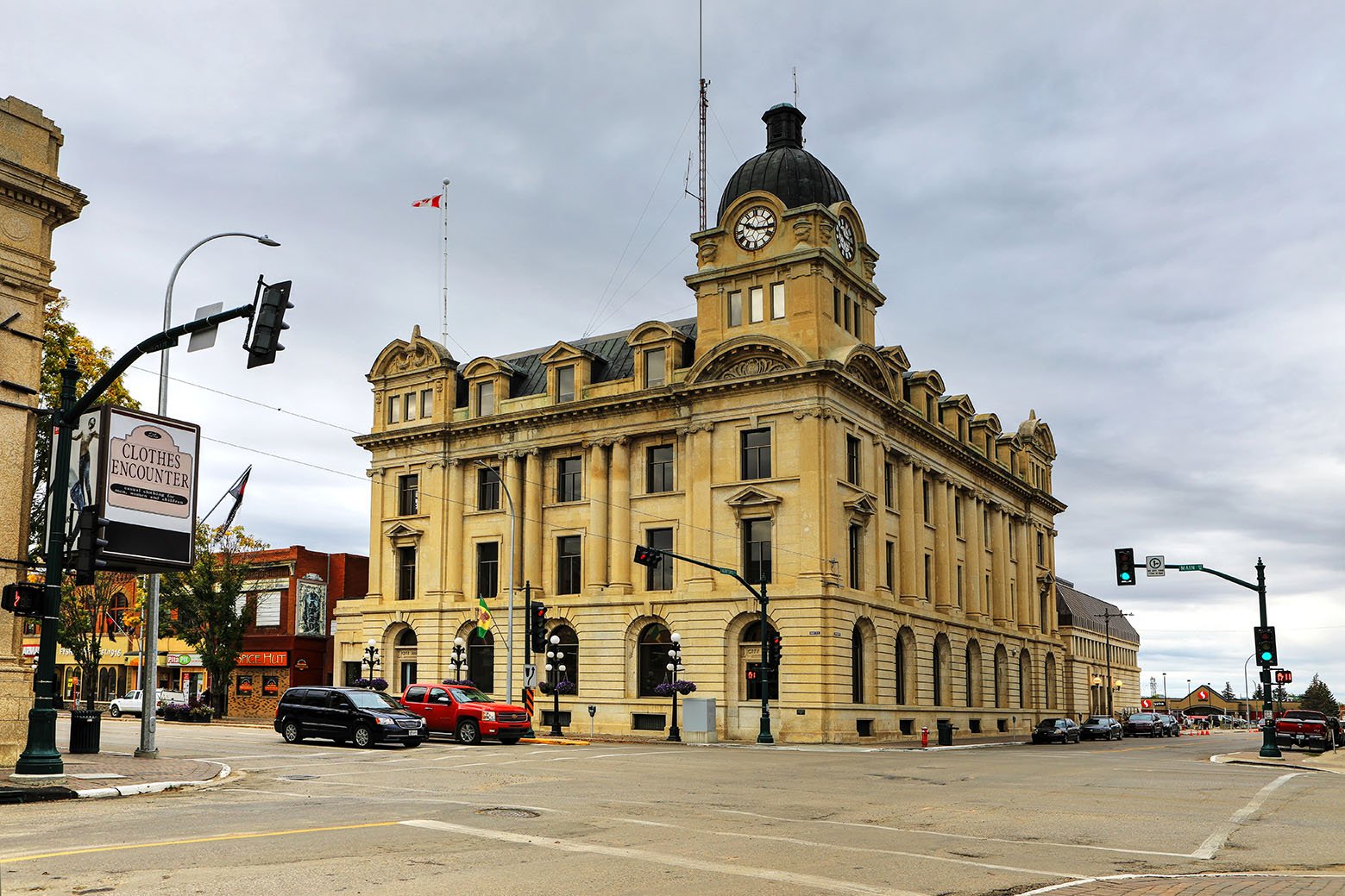A small city with a big heart
Located in the province of Saskatchewan, Canada, Moose Jaw is a small city that stands out for its rich history and vibrant culture. The city has played a significant role in the development of the region, with its roots dating back to the late 19th century when it emerged as a crucial railway junction and commercial hub.
Moose Jaw features a variety of museums and heritage sites that transport visitors back in time. The city's architecture, featuring beautiful early 20th-century buildings, is a testament to its historical importance.
Moose Jaw is an ideal destination for tourists seeking both relaxation and adventure. The city offers a wide range of attractions, from the tranquil Wakamow Valley to the excitement of the Temple Gardens Mineral Spa. Unique experiences, such as exploring the renowned Tunnels of Moose Jaw or enjoying local art at the Moose Jaw Museum & Art Gallery, provide visitors with a distinctive and memorable journey.
What truly sets Moose Jaw apart is its ability to blend history, culture, and natural beauty seamlessly. The city's commitment to preserving its heritage while embracing new developments makes it a fascinating place to explore. Whether you're interested in delving into its historical roots, enjoying its modern amenities, or simply soaking in the picturesque landscapes, Moose Jaw promises an enriching experience for all types of travelers.
Highlights
Moose Jaw Favourites

Downtown Moose Jaw
Downtown Moose Jaw is more than just a historical landmark; it is the pulsating heart of the city’s culture and commerce. The area is regularly abuzz with activity, housing a delightful mix of boutiques, cafes, galleries, and theatres. These establishments not only cater to the everyday needs of locals but also attract tourists with their eclectic charm and diverse offerings.
A stroll through downtown reveals an inviting atmosphere where each corner tells a story. The renowned murals adorning the walls stand testament to the artistic spirit that thrives here, depicting scenes from Moose Jaw’s vibrant history and community life. Moreover, the frequent festivals and events held within this central area further amplify its lively ambiance.

Mac the Moose
Mac the Moose stands as an iconic symbol of Moose Jaw. With his towering stature, he holds the title of the world's second-largest moose statue, a fact that has created a whimsical yet friendly rivalry with Norway, whose Stor-Elgen moose claimed the top spot. Erected in 1984, Mac the Moose has been a cherished landmark for residents and visitors alike, embodying the spirit and pride of the local community.
The history behind Mac the Moose is as fascinating as the statue itself. Created by Saskatoon artist Don Foulds and commissioned by the city, the statue represents the area's rich connection to nature. Initially designed to boost tourism and promote the city, Mac has over the decades evolved into more than just a large statue; he has become a beloved figure that symbolizes the welcoming and resilient nature of the Moose Jaw community.

CFB Moose Jaw
Canadian Forces Base (CFB) Moose Jaw was initially established in 1940 as a key component of the British Commonwealth Air Training Plan (BCATP), a major World War II initiative aimed at bolstering the Allied air power. The BCATP was designed to train aircrew members from various Commonwealth countries, and CFB Moose Jaw played an essential role in this grand scheme. Located in the province of Saskatchewan, the base quickly became a central hub for military flight training operations. Today, CFB Moose Jaw is currently the main facility for Canada's aviation training, primarily functioning as the base for 15 Wing Moose Jaw, as well as the home base of the RCAF's Snowbird acrobatic team. The economic benefits of CFB Moose Jaw to the local community are substantial. From housing and retail to education and healthcare, nearly every aspect of the local economy is positively impacted.
